I’ve never been too great at doing a dirty pour straight from the cup onto the canvas. Spinning a dirty pour I can do, and flips cups are a big favorite. Otherwise, not so much. I feel my pours really do look ‘dirty’, too messy, too mixed and with no enough contrast and definition.
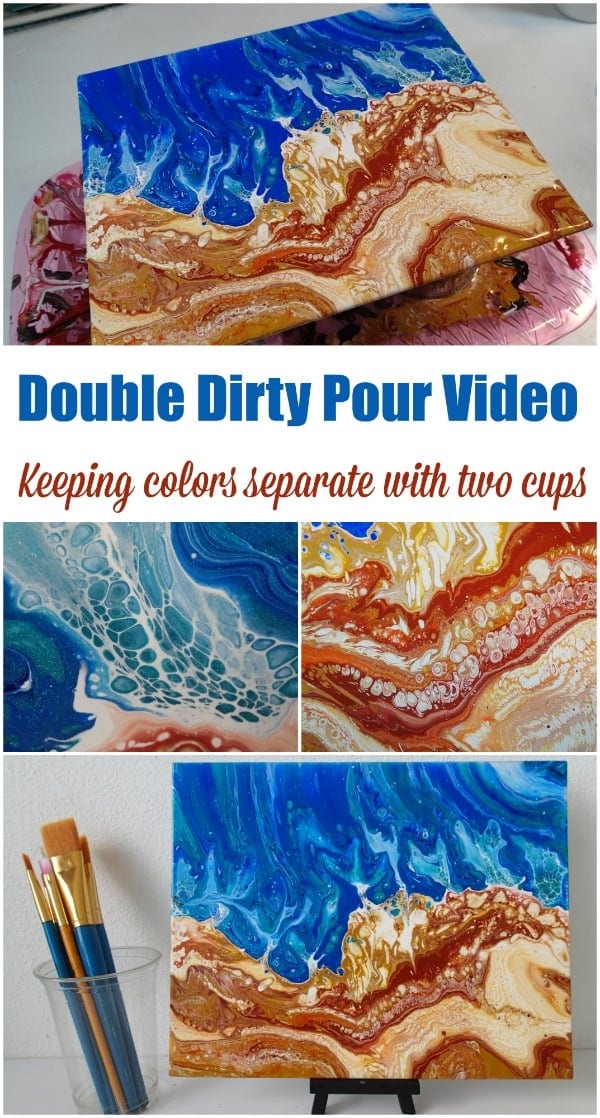
One way to remedy this is to create two very different cups and pour them both onto the same canvas. (Inspired by Carne Goodrich.) Allow them to merge if you like or separate them with a thin line of a solid color. In my case, I mixed blues, greens and whites to create an ‘ocean’ and then yellow, orange, brown and white to create a ‘beach’ effect. A thin line of white paint separated the two very different pours to stop them blending together where I didn’t want that to happen.
A few extra little white accents, blown with a straw created a waves or foam effect, and the mixing of the blues created a lovely ocean currents feel. I only torched on the beach side of this pour, leaving the blue side to flow more freely.
And ooh, I love it! Some of the blown white details faded a little during the drying, but it was still gorgeous. The metallics are amazing. I simply can’t get enough sparkle and glitter in my art.
Check out the slideshow below for lots more pictures, both wet and dry, and close-ups of all the glorious details.
After being told in high school that she was so bad at art that she should switch to another subject, Deby didn’t paint again for 35 years. Then a stroke released a new wave of creativity and she began exploring with dot painting, abstract and eventually acrylic pouring, and at last the joy of working with color returned. You don’t need ‘talent’ to be an acrylic pouring artist – just enthusiasm, some basic instruction, and a willingness to try, fail and try again. Paint along with her and learn from her many mistakes, and you’ll soon make great art together.

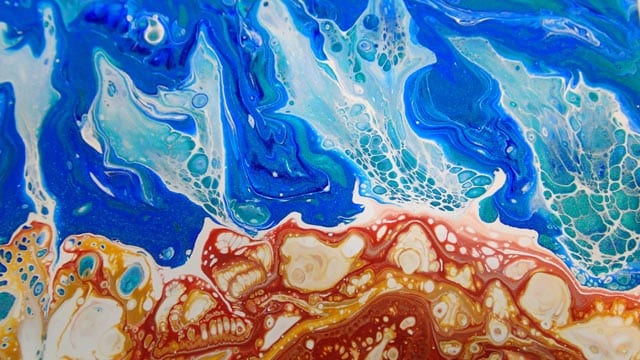
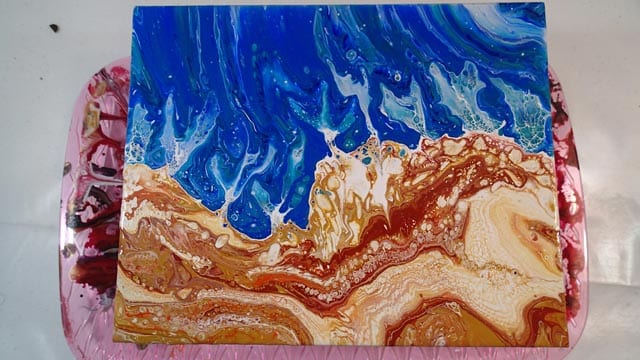
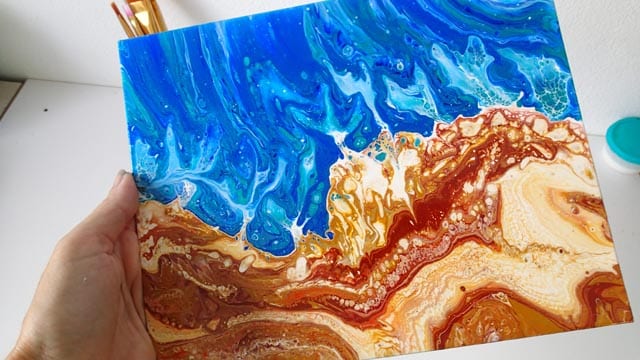
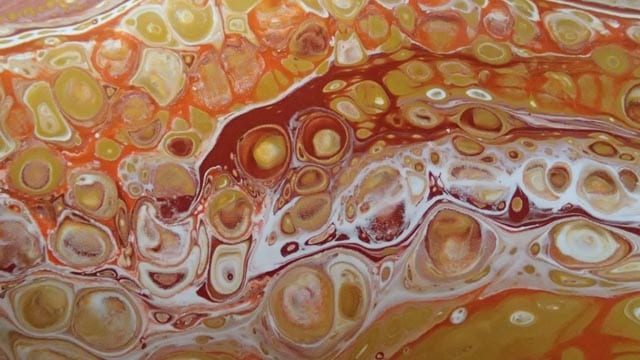
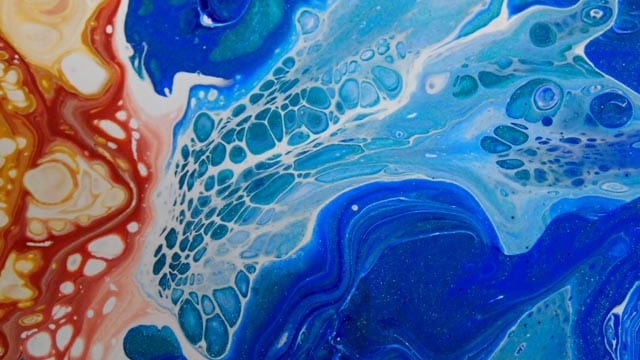
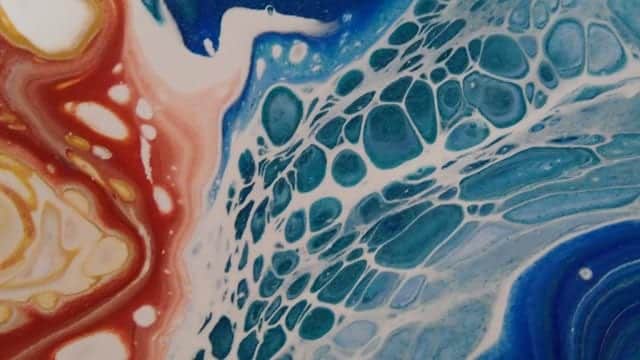
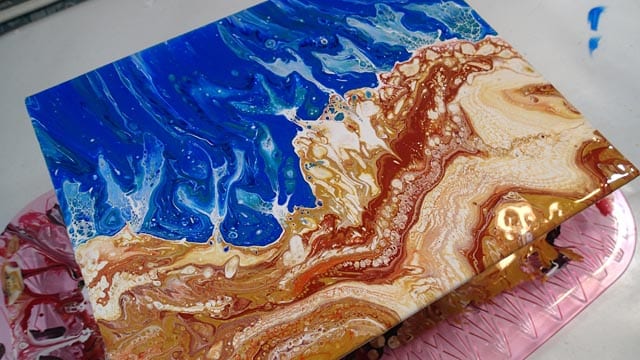
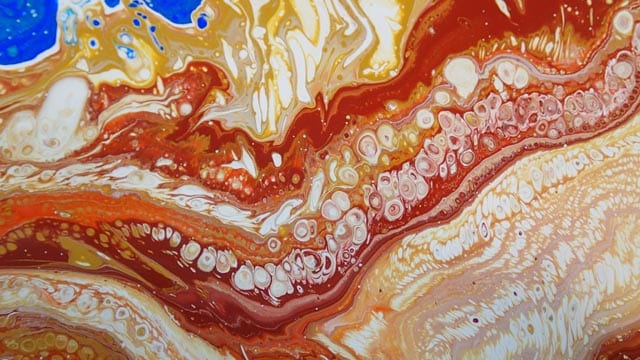
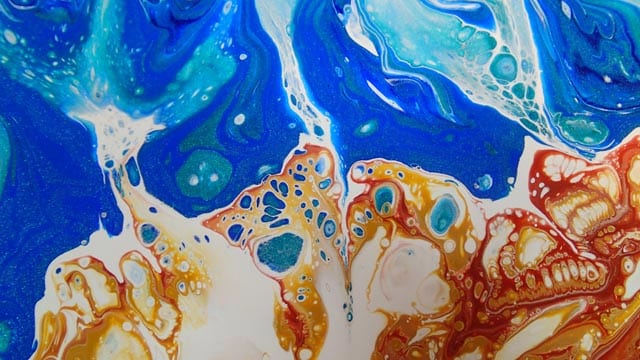
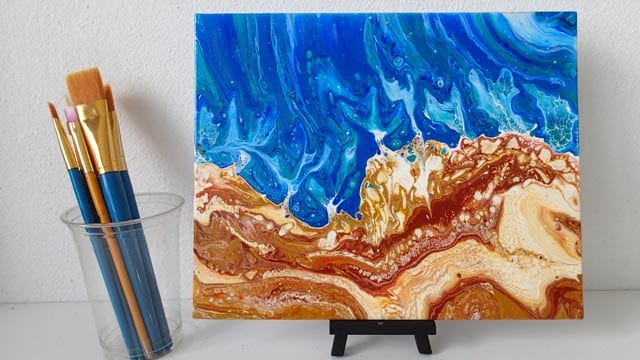
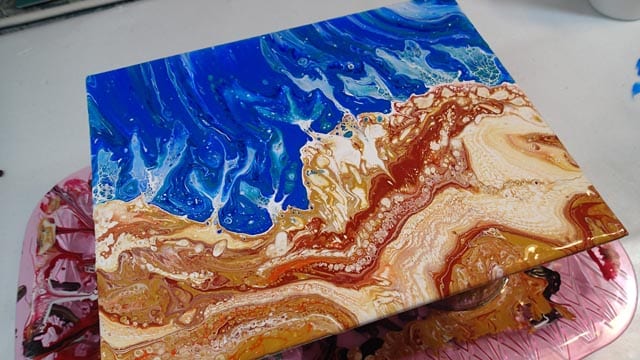
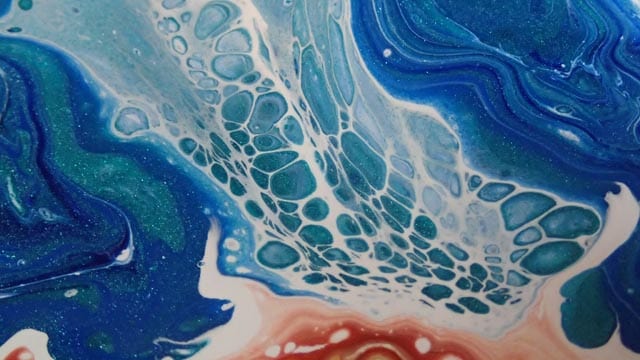
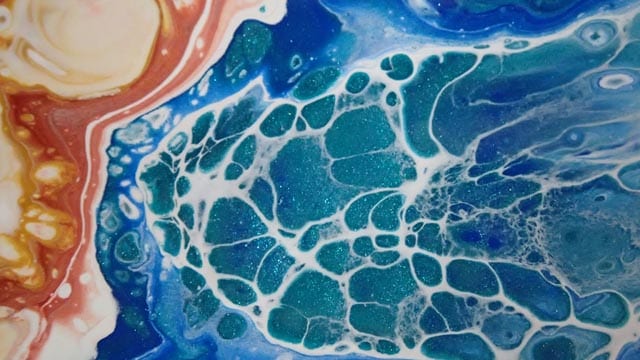
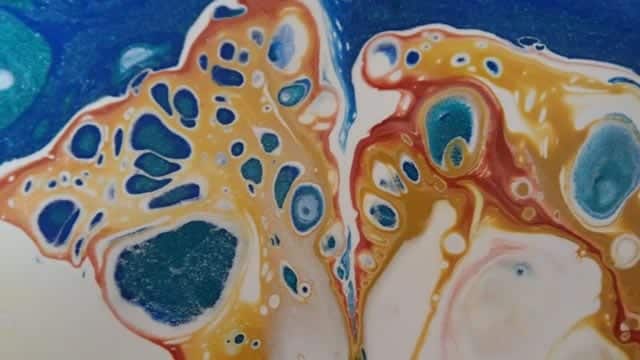
Have you used silicone in the colours? Please let me know because no matter what I use, I don’t get cells.
Yes I did use some silicone. Sorry to hear you are struggling. Sometimes it can take a lot of practice to get your paints just right. I do have a new Ebook which explains the whole process, shows mixing the paints and my own secret recipe to make cells without even torching. But if you are in India, I think you might find the exact supplies I used hard to come by. Come join us in the Facebook group, there are lots of people from India. Hopefully someone can give you tips.
Hi Deby,
I was wondering if you had a formula for the amount of pour mix to make for various standard size canvases?
Thank you.
Betty
I’ve not got my head around this yet, I still usually mix up FAR too much. There is a resin calculator you can use to get a rough idea and then add maybe 50% more for the run-off paint – https://www.artresin.com/pages/calculator
Thank you.
I think that will work to give me a general idea of how much to prepare.
Betty
Hi Deby, I recently purchased your book from craftsy. I was really excited to read it. The only problem was it downloaded in German and I don’t speak german. Can you help me?
Hi Linda, I replied to your email on this 3 or 4 days ago. I think you bought the German one instead of the English. I will go look at the email and resend it again to you.
Hi, Deby, I really enjoyed this video. I, too, have had a few panels warp. What I did was lightly wet the back with water, and use my hands to get it all over; then I placed heavy books on top for a few weeks. That gave me a permanent fix and they never warped again. Any of the panels I’ve done this to are now good. Hope this helps. Thanks so much for all the good you’re doing in the world of pouring. I’ve recommended your course to several people now, so I hope they sign up. Warmly, Lyn Ayre
Hi Debbie, I’m in the UAS and new to AP, so I have 3 issues to contend with. The first is we use ounces, teaspoons and tablespoons -measuring tools don’t come in ml, grams etc, so I’m lost as to mixing.
Secondly I have some Acrylic indoor wall paint by Behr and wanted to use it as a base layer, however it’s matte and I thought it might produce some interesting results but don’t know what if any prep I need to do first.
I also don’t want to invest in tons of additives, so something with water and a bit more, Flowtrol is super expensive here in Hawaii, is there an alternative? My paints will flow well with a 1/4 ratio of water to paint.
Thanks, I look forward to hearing from you and enjoying this new journey.
Millie King
Edit for Millie king, I’m in USA, not UAS, sorry